Free Letter of Interest Template
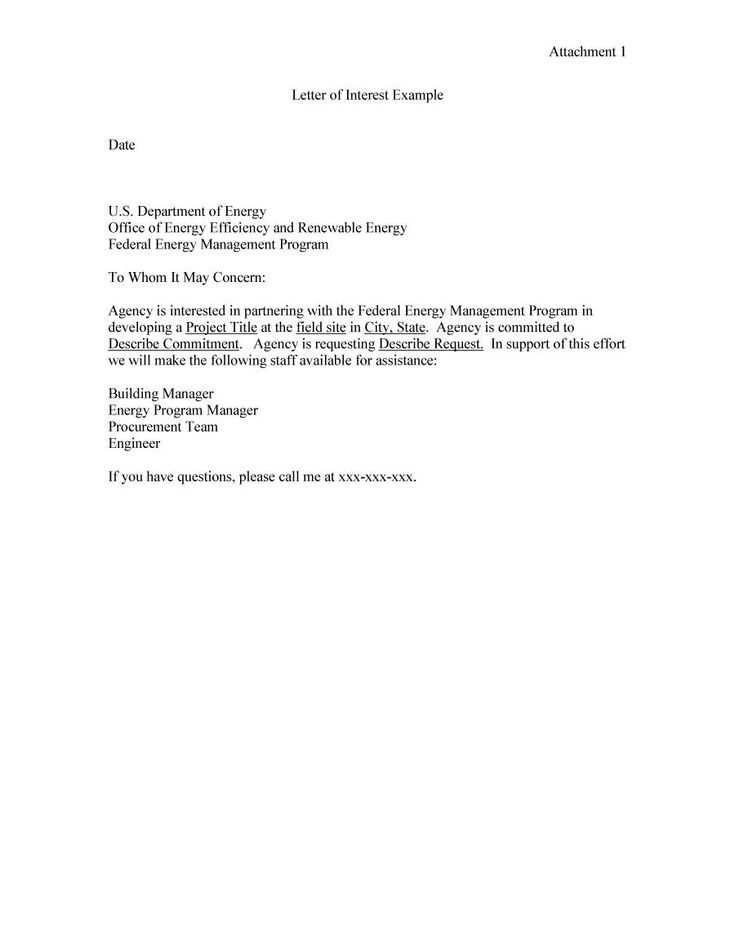
In the competitive world of job applications and business proposals, making a strong first impression is essential. A well-written introductory document can open doors to new opportunities, whether you’re seeking a job or aiming to build valuable connections. Knowing how to structure and articulate your goals clearly is key to grabbing the attention of your recipient.
Creating a personalized and compelling message that reflects your strengths, aspirations, and the purpose behind reaching out is critical. With the right structure and approach, you can convey professionalism and sincerity. It’s important to understand the components that make your message impactful while keeping it concise and relevant to your audience.
Utilizing a carefully crafted structure can help you effectively communicate your intentions. You don’t need to start from scratch every time. Instead, you can use adaptable formats to guide your writing process, ensuring that each message you send is tailored to the specific opportunity you’re pursuing.
Mastering the art of professional communication doesn’t require advanced writing skills, but rather a clear understanding of your goals and the ability to express them in a structured and engaging manner. By refining this skill, you can significantly enhance your chances of success in both your professional and business endeavors.
Why Use a Letter of Interest
In today’s professional world, standing out and getting noticed by potential employers or business partners requires more than just submitting applications or proposals. Crafting a thoughtful and well-structured introduction can capture the attention of decision-makers, showing that you are proactive and genuinely interested in connecting. This approach can open doors to opportunities that may not be advertised or readily available.
Demonstrating Initiative
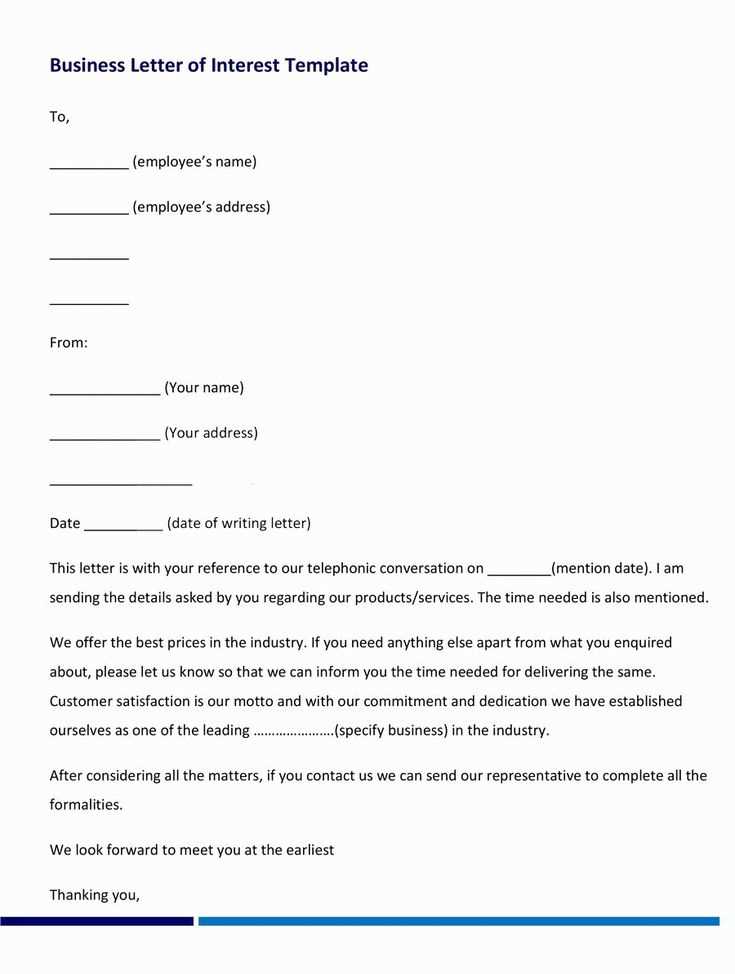
Reaching out with a carefully written message allows you to showcase your enthusiasm and determination. By proactively expressing your intentions, you highlight your ability to take the initiative and create opportunities for yourself. This proactive approach can be a deciding factor in whether or not you get considered for an open position or partnership.
Building Professional Relationships
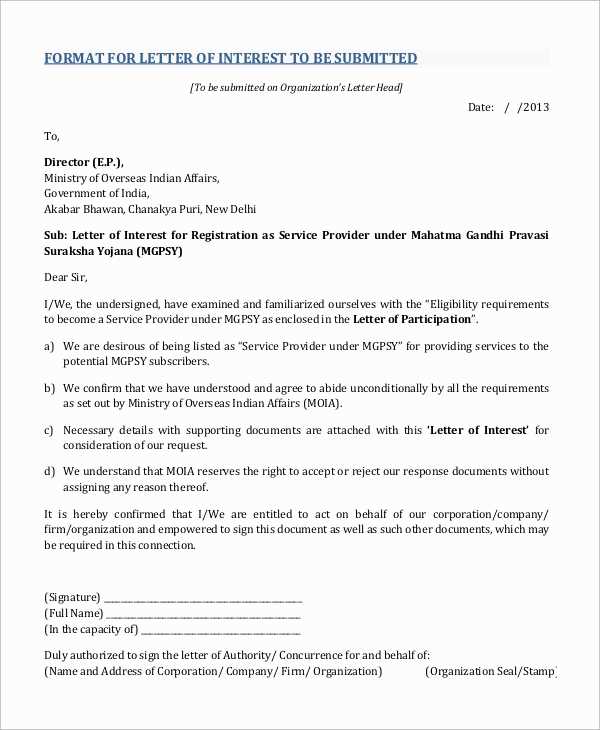
These introductions also serve as a valuable tool for networking. They help foster professional relationships that might lead to future collaborations or job offers. By sending a well-crafted message, you create a personal connection that could be the first step in establishing a long-term professional relationship.
Steps to Customize Your Letter
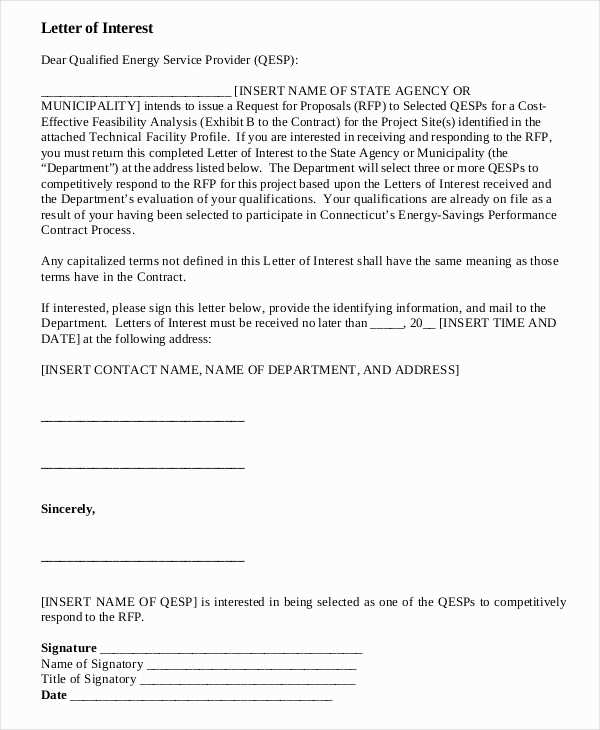
When creating a personalized introduction, it’s crucial to adapt your message to suit the specific context and audience. Tailoring your communication ensures that it aligns with your objectives and resonates with the recipient. By following a few simple steps, you can craft a message that stands out and effectively conveys your intentions.
Start by researching the company or individual you are reaching out to. Understanding their values, goals, and challenges will help you tailor your content to demonstrate how your skills or ideas align with their needs. This research can make your message more relevant and engaging, increasing the chances of a positive response.
Next, focus on adjusting the tone and structure of your writing. Depending on the audience, you may want to strike a formal or informal tone, ensuring it reflects the level of professionalism required. Customize the content to highlight your unique qualifications or experiences, ensuring that your message is both clear and concise.
Finally, ensure that your contact details and call to action are easy to follow. Be specific about the next steps you would like to take and make it simple for the recipient to get in touch with you. A well-structured and straightforward approach helps reinforce your message and makes it easier for others to respond.
Key Elements in a Strong Letter
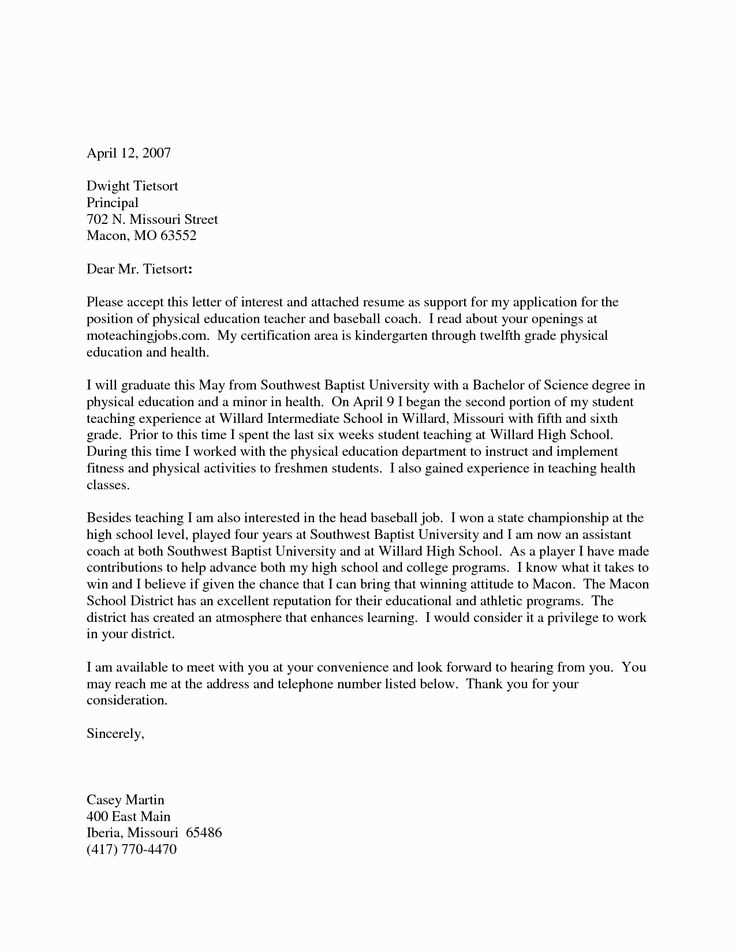
To create an impactful message, several core elements must be included to ensure it is clear, professional, and engaging. These components work together to capture attention and leave a lasting impression on the reader. A strong communication piece should not only highlight your qualifications but also convey your enthusiasm and readiness to take the next steps.
Clarity and Focus are essential. Your message should have a clear purpose and be easy to understand. Avoid unnecessary jargon and keep your ideas concise, ensuring that every sentence contributes to your overall objective.
Personalization plays a key role in making your message stand out. Customizing your communication to the recipient, whether through specific references to their company or projects, shows that you’ve done your research and are genuinely interested in connecting with them.
Professionalism is crucial in establishing credibility. Using a formal tone, appropriate language, and correct formatting demonstrates your respect for the recipient and your commitment to presenting yourself well.
Actionable Next Steps should be clearly outlined. Always conclude by suggesting a course of action, whether it’s setting up a meeting or requesting further discussion. This helps guide the recipient on how to move forward with your proposal.
Common Mistakes to Avoid
When crafting a professional message, there are several pitfalls that can undermine the effectiveness of your communication. Whether it’s a lack of personalization or poor structure, these errors can result in your message being overlooked or dismissed. It’s important to be mindful of these common mistakes to ensure that your message resonates with your recipient.
- Overuse of Generic Phrases: Using too many clichés or one-size-fits-all phrases can make your message feel impersonal and unoriginal.
- Excessive Length: While it’s important to provide relevant details, overly long messages can lose the reader’s attention. Keep your communication concise and to the point.
- Lack of Clear Purpose: Failing to clearly state the reason for reaching out can confuse your recipient. Be direct and outline your goals from the start.
- Grammatical and Spelling Errors: Mistakes in spelling or grammar can damage your credibility and make your message appear unprofessional.
- Failure to Personalize: Sending a generic or template-like communication without any reference to the recipient or their work can seem detached and uninspired.
- Not Providing Clear Next Steps: Always conclude with a clear call to action. Without guidance on the next steps, your recipient may not know how to respond or proceed.
Where to Find Free Templates
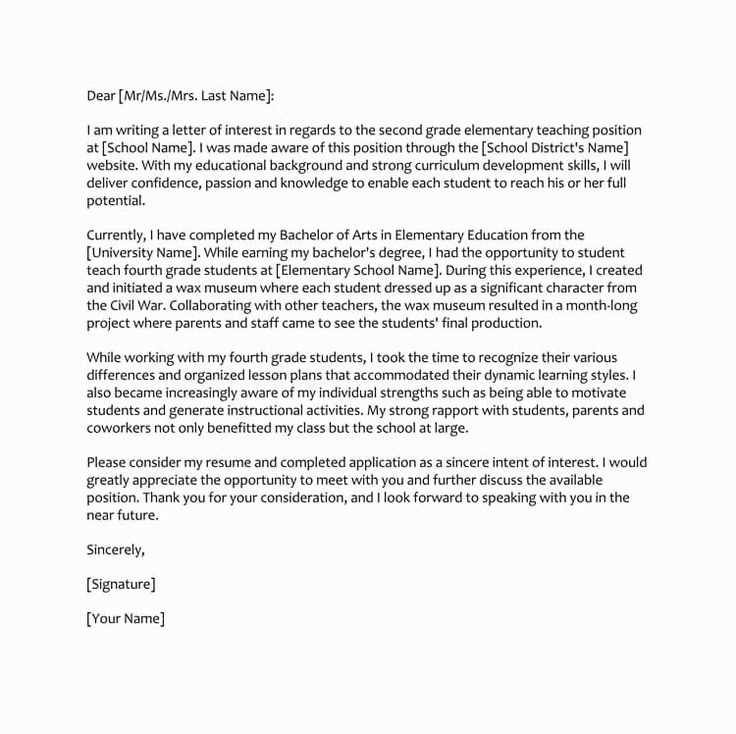
There are many resources available online where you can access professionally designed formats to help you create personalized communications. These platforms offer easy-to-use tools that allow you to adapt the content to your specific needs, saving you time and effort while ensuring your message remains clear and effective.
Online Document Platforms
Several websites provide a range of customizable formats that can be easily downloaded and edited. These platforms often offer a variety of styles, ensuring that you can find one that matches the tone and purpose of your message. Look for those that allow for easy modification to fit your requirements.
Professional Networking Websites
Networking platforms also frequently offer resources, including sample communications and guides. Many professionals share their successful approaches, and you can often find helpful examples to inspire your own message. These resources can provide insight into industry-specific expectations and norms.
How to Make a Lasting Impression
Creating a memorable and impactful message is key to standing out from the crowd. The goal is to leave a positive, lasting impression that encourages the recipient to engage with you further. By focusing on key elements such as personalization, clarity, and professionalism, you can increase the likelihood of your communication being remembered and acted upon.
Start by ensuring that your message is concise and to the point. Avoid unnecessary details that may distract from your main objective. A clear and well-organized message allows the recipient to quickly grasp your intentions and appreciate the value you bring.
Another crucial factor is personalization. By tailoring your communication to the recipient’s specific needs or interests, you show that you’ve invested time and effort into understanding their situation. This personal touch can go a long way in building rapport and establishing trust.
Finally, be sure to express enthusiasm and a willingness to engage. A positive, confident tone can create a sense of excitement and demonstrate your readiness to move forward, whether it’s through further conversation or collaboration.